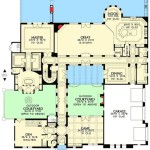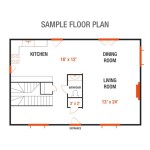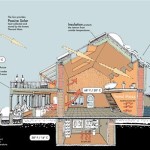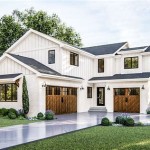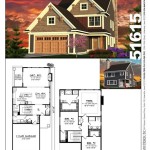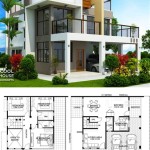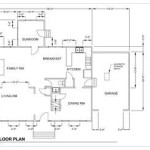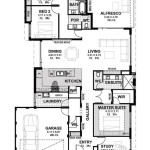Maximizing Space and Style: Home Plans Under 1000 Square Feet
The rising costs of construction, coupled with a growing desire for simpler, more sustainable living, have fueled a surge in the popularity of small home designs. Home plans under 1000 square feet offer a compelling alternative to larger, more expensive properties. These compact dwellings prioritize efficiency, affordability, and environmental consciousness without sacrificing comfort or aesthetic appeal. Careful planning and innovative design are crucial to successfully creating a functional and stylish living space within this constrained footprint.
Designing a small home requires a different approach compared to designing larger homes. The focus shifts from accommodating excess space to maximizing every square inch. Multifunctional furniture, open-concept layouts, and strategic storage solutions become essential elements. Furthermore, careful consideration must be given to natural light, ventilation, and the overall flow of the space to create a comfortable and livable environment. This article delves into the key considerations and design principles for creating successful home plans under 1000 square feet.
Key Point 1: Prioritizing Functionality and Efficiency
The cornerstone of successful small home design is functionality. Every space must serve a purpose, and the layout should facilitate ease of movement and daily living. Open-concept designs are often favored as they eliminate unnecessary walls, creating a sense of spaciousness and allowing natural light to permeate throughout the home. Integrating the kitchen, dining area, and living room into a single, unified space can significantly enhance the perceived size of the home. Thoughtful zoning within this open area is still necessary to define distinct functional areas.
Efficiency extends beyond the layout to encompass the selection of appliances and fixtures. Opting for compact, energy-efficient appliances, such as apartment-sized refrigerators and combination washer-dryer units, can save valuable space and reduce energy consumption. Similarly, selecting fixtures with smaller footprints, such as wall-mounted sinks and toilets, can free up floor space. The use of vertical space is also critical. Tall cabinets, shelving units that reach the ceiling, and lofted storage areas can dramatically increase storage capacity without expanding the home's footprint.
Furthermore, minimizing clutter is paramount in a small home. Implementing effective storage solutions is essential to prevent the accumulation of unnecessary items. Built-in storage, such as window seats with storage underneath, shelving integrated into walls, and hidden compartments, can help to keep belongings organized and out of sight. Regularly decluttering and donating unwanted items is also crucial to maintaining a sense of order and spaciousness.
Key Point 2: Maximizing Natural Light and Ventilation
Adequate natural light is essential for creating a bright, airy, and inviting atmosphere in a small home. Large windows, skylights, and strategically placed glass doors can flood the interior with sunlight, making the space feel larger and more open. The orientation of the home on the building site should be carefully considered to maximize solar gain during the day and minimize heat loss during the night, contributing to energy efficiency.
The placement of windows is just as important as their size. High windows, clerestory windows, and transom windows can bring light into the home while maintaining privacy. Utilizing light-colored paint and finishes can also amplify the effect of natural light, making the space feel brighter and more spacious. Mirrors can be strategically placed to reflect light and create the illusion of depth. Careful consideration of window coverings is also necessary to control the amount of light entering the home and to provide privacy when needed.
Proper ventilation is equally important for maintaining a comfortable and healthy indoor environment. Cross-ventilation, achieved by placing windows on opposite sides of the home, allows for natural airflow, helping to regulate temperature and remove stale air. Operable windows and skylights can be opened to allow fresh air to circulate throughout the home. The use of ceiling fans and strategically placed vents can also improve ventilation. Dehumidifiers may also be necessary in humid climates to prevent moisture buildup and mold growth.
Key Point 3: Smart Material Selection and Space-Saving Solutions
The choice of materials plays a significant role in the overall aesthetic and functionality of a small home. Selecting lightweight, durable, and low-maintenance materials can contribute to a sense of spaciousness and reduce future maintenance costs. Light-colored flooring, such as hardwood, laminate, or tile, can reflect light and make the space feel larger. Utilizing the same flooring throughout the home creates a seamless look and enhances the sense of continuity.
Multi-functional furniture is a key element in maximizing space in a small home. Convertible sofas that transform into beds, dining tables that can be folded away when not in use, and storage ottomans can serve multiple purposes, reducing the need for additional furniture. Wall-mounted desks and tables can be folded down when needed and stored away when not in use, freeing up valuable floor space. Modular furniture allows for flexibility and can be rearranged to suit different needs.
Space-saving solutions extend beyond furniture to encompass built-in elements. Murphy beds, which fold up into the wall when not in use, can transform a living room into a bedroom in seconds. Pocket doors, which slide into the wall, eliminate the need for swinging doors, saving valuable floor space. Open shelving can provide storage while also serving as a decorative element. Creative storage solutions, such as under-bed storage containers and hanging organizers, can maximize every available inch of space.
Furthermore, embracing minimalist design principles can contribute to a sense of spaciousness and order. Limiting the number of accessories and decorative items can prevent the space from feeling cluttered and overwhelming. Choosing a cohesive color palette and sticking to a consistent design style can create a harmonious and visually appealing environment. By carefully selecting materials, incorporating multi-functional furniture, and embracing minimalist principles, it is possible to create a comfortable and stylish living space within a limited footprint.
In conclusion, home plans under 1000 square feet present a unique opportunity to create affordable, sustainable, and stylish living spaces. By prioritizing functionality, maximizing natural light, and incorporating smart material selection and space-saving solutions, it is possible to design a small home that meets the needs of its occupants without sacrificing comfort or aesthetic appeal.

7 Ideal Small Houses Floor Plans Under 1000 Square Feet House Cottage

Small House Plans Under 1000 Sq Ft Google Search Cottage Cabin Floor

House Plans Under 1000 Square Feet

Our Top 1 000 Sq Ft House Plans Houseplans Blog Com

10 Modern Under 1000 Square Feet House Plans Craft Mart
House Plan Of The Week 2 Beds Baths Under 1 000 Square Feet Builder

Our Top 1 000 Sq Ft House Plans Houseplans Blog Com

10 Modern Under 1000 Square Feet House Plans Craft Mart
Small Country Ranch Plan 2 Bedrm Bath 1000 Sq Ft 141 1230

10 Modern Under 1000 Square Feet House Plans Craft Mart

